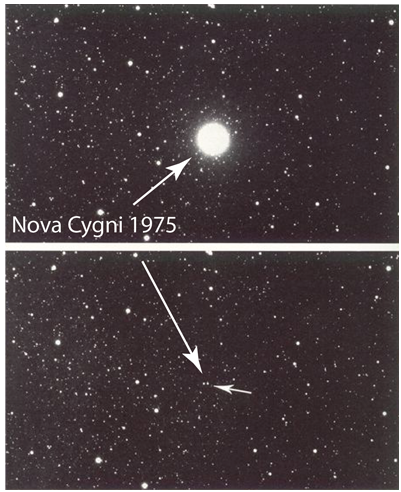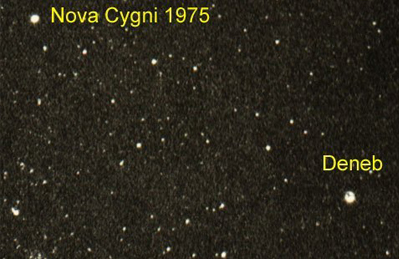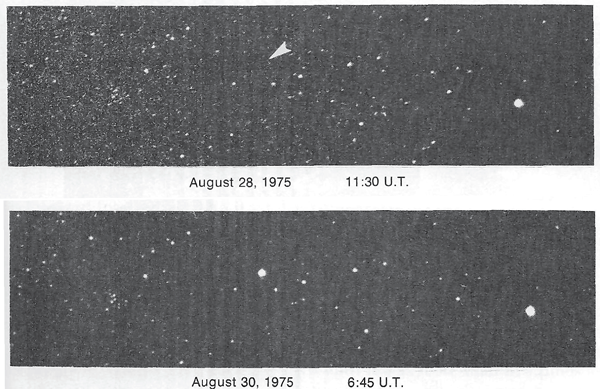Nova Cygni 1975
 |
The brightest Nova in recent years was Nova Cygni 1975 which became
visible in Cygnus in August. It
reached a magnitude of 1.8
after a rise in magnitude of
about 15 in two days time.
This is a million-fold increase
in luminosity!
(Image accessed Astrophysique gamma nucleaire, Toulouse 19-21 avril 2004. Novae- M. Hernanz) |
Nova Cygni 1975 was close to the bright star Deneb, a member of the "summer triangle", and reached a brightness comparable to Deneb. The photo is a 30sec time exposure taken on August 30, 1975. (Accessed at Astronomeer.com) |  |
 | The images below show the difference in brightness in two days. They were taken by Ben Mayer who was taking photographs in a search for meteors. They were 25 minute exposures on Tri-X film. The were reproduced by Jay Pasachoff, see reference. The bright star at right is Deneb. |

Reference
Pasachoff
Ch. 7
| HyperPhysics***** Astrophysics | R Nave |